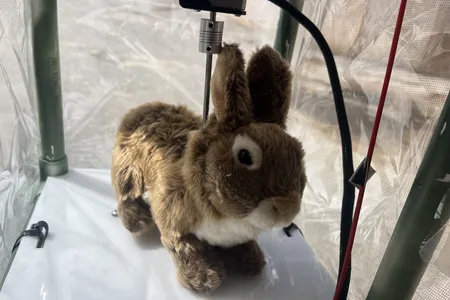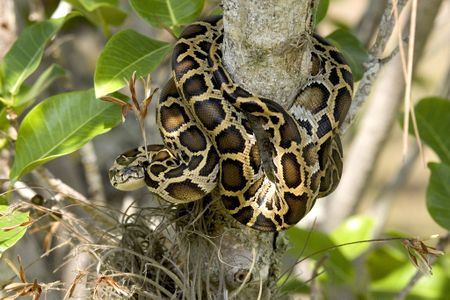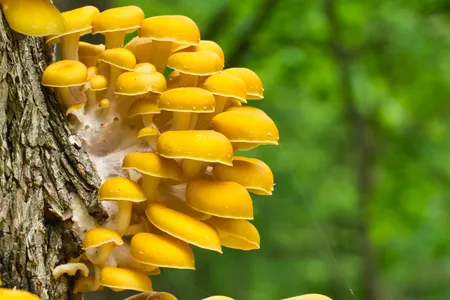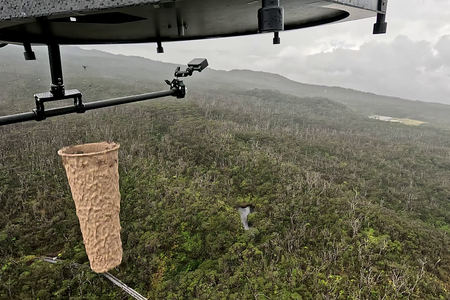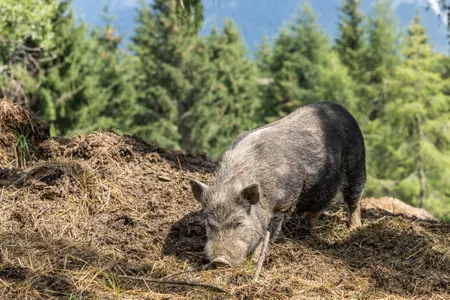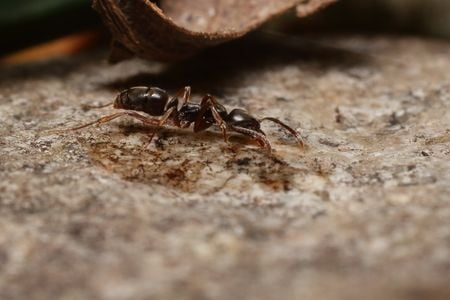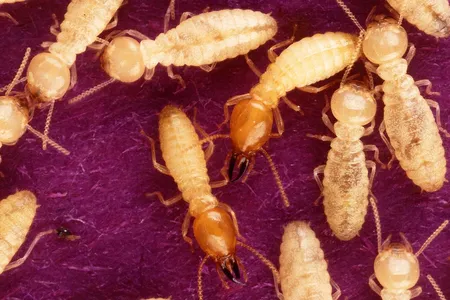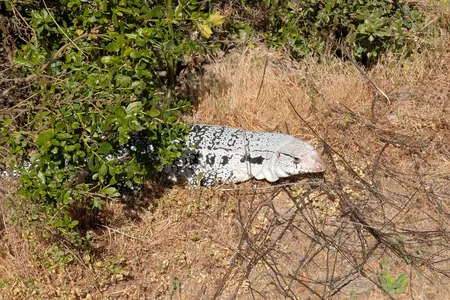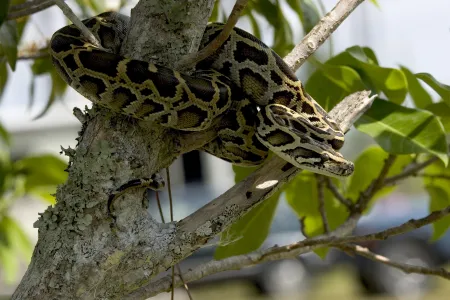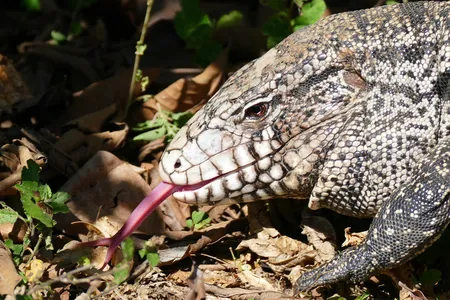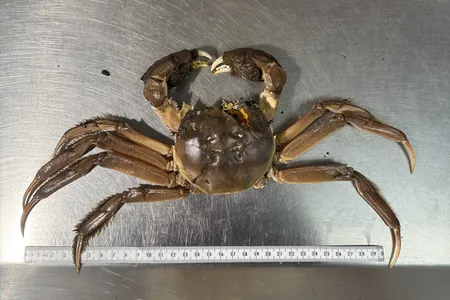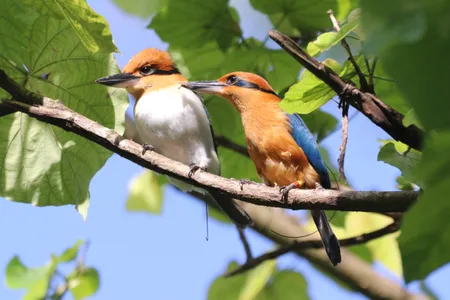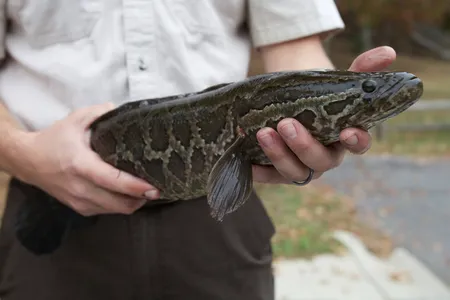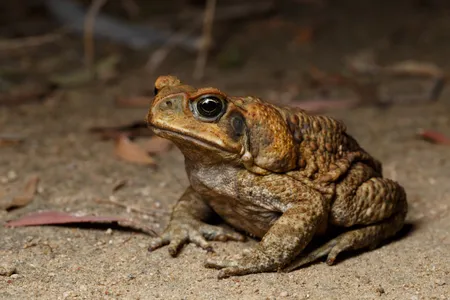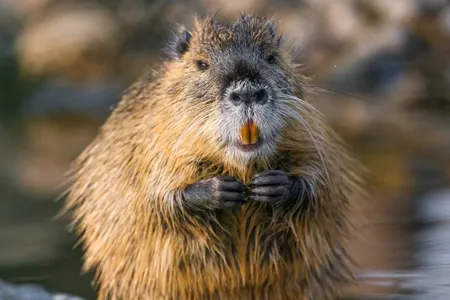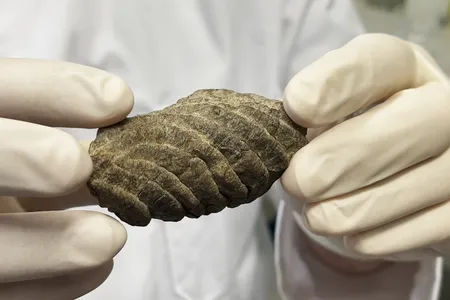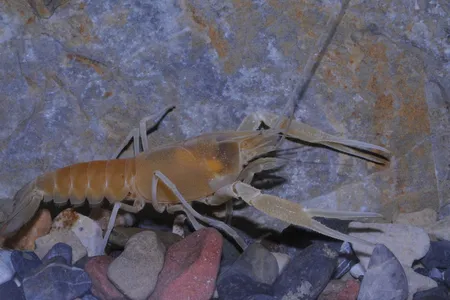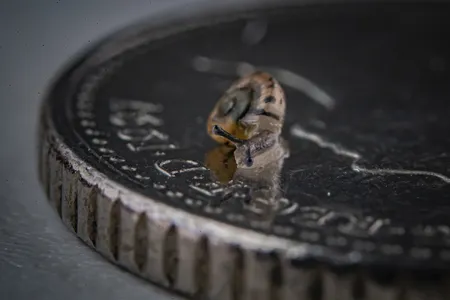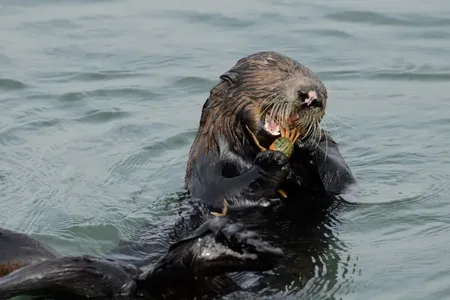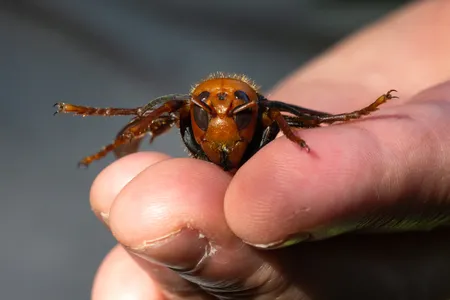‘Robo-Bunnies’ Are the Newest Weapon in the Fight Against Invasive Burmese Pythons in Florida
Scientists are experimenting with robotic rabbits in hopes of luring the destructive snakes out of hiding so they can be euthanized
Researchers Discover the Trick That Allows Burmese Pythons to Digest the Bones of Their Prey
Special intestinal cells collect excess minerals into particles the snakes can poop out, according to a new study
Invasive Golden Oyster Mushrooms Are Crowding Out Native Fungi and Could Slash Biodiversity in Forests, Study Suggests
Researchers found that trees in Wisconsin that had become hosts to the eye-catching species hosted only half the fungal biodiversity of trees that had not been invaded
Scientists Are Using Drones to Unleash Thousands of Mosquitoes in Hawaii in a Bid to Save Native Birds. Here’s How It Works
The lab-raised, non-biting male mosquitoes are meant to breed with the invasive ones on the islands and produce sterile eggs that will help suppress avian malaria
Wild Pigs Are Causing Big Problems in California’s Bay Area, and Their Population Seems to Be Growing
Land managers and other authorities are ramping up efforts to trap and kill the destructive, non-native animals
Watch Out for These Invasive, Stinging Ants That May Cause Life-Threatening Allergic Reactions
First introduced in the 1930s, carnivorous Asian needle ants appear to be spreading across the United States
Two Invasive Termites Are Interbreeding in Florida, Raising Concerns That the Hybrid Pests Could Spread Around the World
Previous research found that Asian and Formosan termites could produce offspring together, and now, scientists have found these creatures established in the wild
A Large, Invasive Lizard Was Spotted in a California Park
Hikers at Joseph D. Grant County Park, just outside of San Jose, saw an Argentine black and white tegu last week—and rangers are now searching for the out-of-place reptile
Florida Bobcat Kills 13-Foot Python for the First Time on Record. It’s a Sign of Nature ‘Fighting Back’ Against the Invasive Snakes
Burmese pythons are wreaking havoc on the Everglades ecosystem, but some native animals have been known to prey on the enormous reptiles
Mysterious Fossil Found in Museum Storage Turned Out to Be a New, Extinct Lizard Species
Today, tegus are considered invasive creatures in Florida, but a new paper suggests they’ve lived in the southeastern United States at least once before—millions of years ago
Invasive Crab With Furry, Mitten-Like Claws Detected for the First Time in the Pacific Northwest
A commercial fisherman nabbed a large male Chinese mitten crab in the lower Columbia River late last month, putting biologists on high alert
Biologists Rejoice as Extremely Rare Guam Kingfishers Lay Their First Wild Eggs in Nearly 40 Years
The brightly colored birds are extinct in the wild, having disappeared from their native Guam in 1988 due to the introduction of the invasive brown tree snake. But now, they’re starting to make a comeback on Palmyra Atoll
These Large, Snake-Like Fish Are Invading the United States—and Authorities Want You to Kill Them
Invasive northern snakeheads can “walk” on land, breathe air and survive out of water for several days, and they also compete with native species in waterways
Scientists Create Gene-Edited ‘Peter Pan’ Tadpoles That Could Control Invasive Cane Toads Through Cannibalism
To combat one of Australia’s most troublesome species, researchers are developing hungry tadpoles that never grow up
The U.S. Fish and Wildlife Service Wants You to Eat These Giant, Invasive Rodents
As part of National Invasive Species Week, the agency is calling on Americans to “eat the invaders,” including swamp-dwelling nutria
Fossilized Poop Reveals How Extinct, Flightless Birds Helped Spread New Zealand’s Colorful Fungi
The upland moa was likely drawn to the fungi because of their resemblance to berries, scientists say, allowing the creature to fill a role typically played by mammals
Freshwater Animals Are More Fragile Than Thought, With Nearly a Quarter Threatened With Extinction, Study Finds
Species in Lake Victoria, Lake Titicaca, Sri Lanka’s Wet Zone and the Western Ghats of India are particularly vulnerable to the effects of agriculture, human infrastructure and climate change, per the paper
Once Feared Extinct, 1,329 Pea-Sized Snails Have Been Released on an Atlantic Island After Captive Breeding Effort
Goats, rodents and habitat loss threatened the snails on Deserta Grande Island, so the mollusks were reintroduced on a neighboring island that’s free of invasive species
Hungry Sea Otters Are Taking a Bite Out of California’s Invasive Crab Problem, New Study Finds
Researchers estimate southern sea otters eat up to 120,000 European green crabs per year at the Elkhorn Slough National Estuarine Research Reserve
Officials Declare the U.S. Free of ‘Murder Hornets’ in a Rare Victory Against an Invasive Insect
Five years after the first sighting in Washington state, intense efforts have eradicated the bee-killing hornets from the nation
Page 1 of 10
